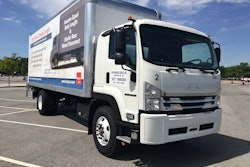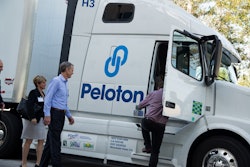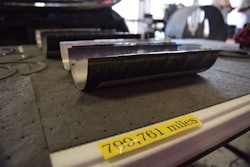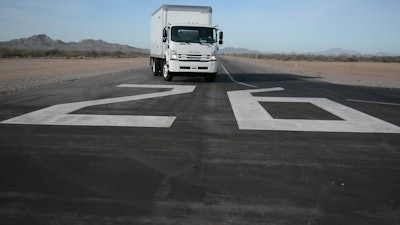
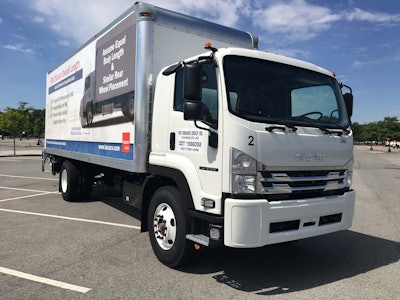
The FTR was pitted against a Freightliner M2 106, International DuraStar 4300, Hino 268A, Ford F-650 and Kenworth K270 in five areas most important to owners and operators of Class 6 trucks.
“When we introduced the FTR last spring, some naysayers thought a four-cylinder Class 6 truck could never compete with the six-cylinder models you typically find in this segment,” says Shaun Skinner, president of Isuzu Commercial Truck of America, Inc., “But the results demonstrate that the FTR exceeds expectations against the top vehicles in its class—and beats them all for maneuverability and fuel economy.”
The testing consisted of the acceleration (0–20, 0–30, 0–40, 0–50, 0–60 and 30–50 miles per hour); braking (55–0 and 30–0 mph); turning radius; time and speed on two separate hill climbs; and fuel economy (measured on both a 198.7-mile mountain route and a 120.7-mile city route with 24 “delivery stops”).
The tests were conducted by Pro Formance Group, Inc. (PFG), in Chandler, Ariz., and the results were certified by the Sports Car Club of America (SCCA). The testing methods were designed by PFG to emphasize consistency and repeatability of results. In addition to SCCA—which sanctioned, observed and validated all testing procedures—PFG engaged Trivinci Systems of Ashburn, Virginia, to provide all instrumentation and an engineer to capture, record and analyze all data during testing.
In fuel economy testing, Isuzu’s new Class 6 truck placed first on the mountain route and in stop-and-go city driving. In acceleration testing, the Isuzu FTR consistently placed in the middle of the pack, thanks to a 5.2-liter turbocharged, four-cylinder engine that generates 215 horsepower and 520 lbs.-ft. of torque. The FTR averaged a 55–0 mph braking distance of 180 feet and a 30–0 mph distance of only 53 feet. Two hill-climb tests measured time and speed to altitude. From 3,520 to 4,500 feet, the FTR averaged a time of 05:15.97 minutes at a maximum speed of 34.6 mph, and averaged 02:23.69 minutes at a maximum speed of 35.1 mph from 2,180 to 2,600 feet.
In maneuverability testing, the FTR was the clear winner, with a measured curb-to-curb turning diameter of 49.0833 feet, beating the second-place finisher by over 1.79 feet—and the last-place competitor by nearly 20 feet. This allows the FTR to carry a 24-foot dry freight box on a wheelbase of only 212 inches—while four of the other five vehicles tested required wheelbases of over 250 inches.



